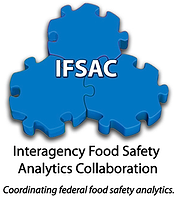According to the U.S. Centers for Disease Control and Prevention (CDC), more imported foods--primarily fish and produce--are the cause of foodborne disease outbreaks. These data are explained in the agency’s study entitled Outbreaks of Disease Associated with Food Imported into the United States, 1996-2014.
How much food consumed in the U.S. is imported from other countries?
- 97 percent of fish and seafood
- 50 percent of fresh fruits
- 20 percent of fresh vegetables
Over the past 20 years, the U.S. had gradually imported more food from outside its borders due to increased consumer demand for more choices, and a wider selection of foods year-round.
The Study
CDC reviewed outbreak reports associated with imported foods between 1996 and 2014--the most recent year for which data were available. Sources of data included the U.S. Food and Drug Administration and the U.S. Department of Agriculture Food Safety and Inspection Service.
The most common illnesses reported were Salmonella and Cyclospora. Aquatic animals were responsible for 55 percent of outbreaks and 11 percent of outbreak-associated illnesses. Produce was responsible for 33 percent of outbreaks and 84 percent of outbreak-associated illnesses. Most of the Salmonella outbreaks (77 percent) were associated with produce, including fruits, seeded vegetables, sprouts, nuts and seeds, spices and herbs.
Region of origin was available for just 91 percent of all the outbreaks studied. The most common regions implicated were Latin America and the Caribbean, followed by Asia. As far as specific countries, Mexico was the most frequently associated with foodborne outbreaks, followed by Indonesia and Canada. Fish and shellfish originated from all regions except Europe but were most commonly imported from Asia (65 percent of outbreaks associated with fish or shellfish). Outbreaks in this analysis were reported from 31 states, most commonly California, Florida and New York. Forty-three outbreaks (22 percent) were multistate outbreaks.
Going forward, CDC believes that there are two keys to improving and maintaining food safety: new outbreak investigation tools, and federal regulatory authority.
Sign up for Food Safety Magazine’s bi-weekly emails!




